Exhibition “the Tea Road” Launched in the Hunan Museum
On March 21, the exhibition "the Tea Road", guided by the National Cultural Heritage Administration, jointly hosted by the joint inscription office of the Great Tea Route and the Cultural Heritage Bureau of Fujian, Jiangxi, Anhui, Hunan, Hubei, Henan, Shanxi, Hebei, Inner Mongolia, was opened in the art hall of Hunan Museum. Duan Tianling, director of the joint inscription office of the Great Tea Route, Chen Yuanping, deputy director of the Hunan Provincial Department of Culture and Tourism, and director of the Cultural Heritage of Hunan, Duan Xiaoming, director of the Hunan Museum, and nearly 100 people attended the opening ceremony, including leaders, experts and professors from the cultural and tourism departments (cultural relics bureau), museums and cultural and museum institutions of the nine provinces (regions) along the route, Central South University, Hunan University and Hunan Normal University.
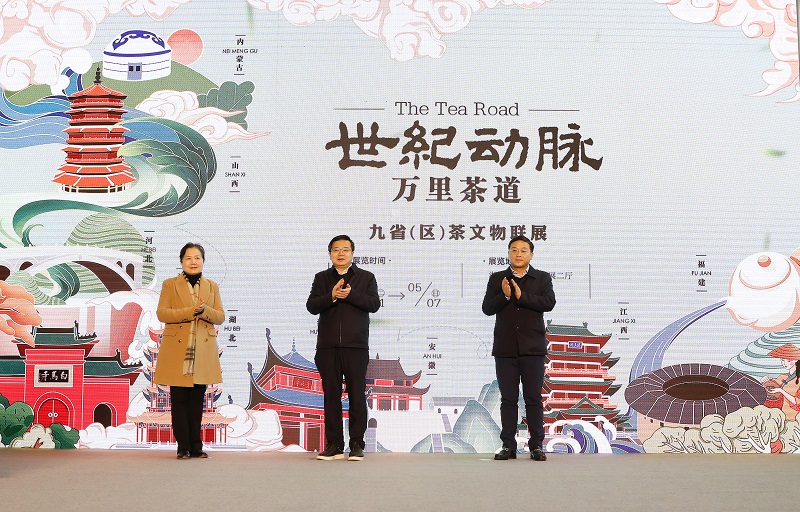
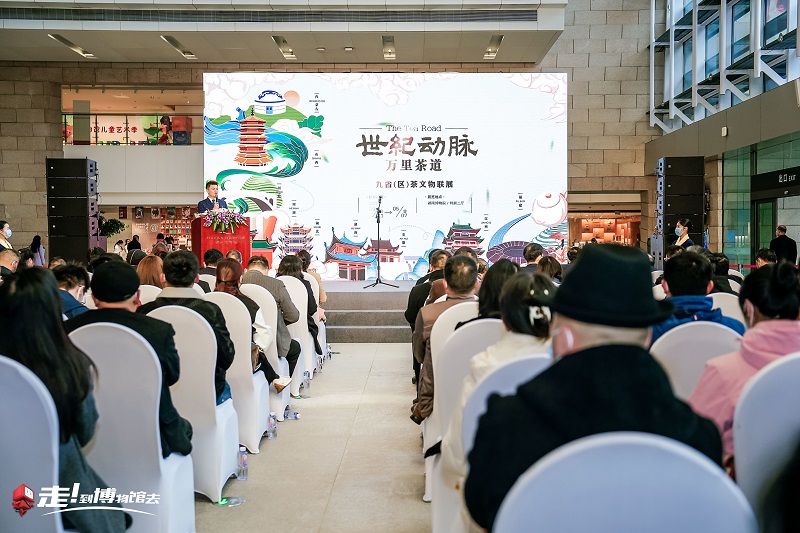
From the 17th century to the early 20th century, Chinese tea was sold to Mongolia, Russia and other European countries via nine provinces (regions) -Fujian, Jiangxi, Anhui, Hunan, Hubei, Henan, Shanxi, Hebei and Inner Mongolia, with a total length of more than 14,000 kilometers, thus it was called "the Tea Road". "The Tea Road" is another important international trade route that emerged in Asia and Europe after the "Silk Road", and is also an important cultural route that has profoundly influenced the commerce, culture and lifestyle of various places along the way. When President Xi Jinping visited Russia in 2013, he pointed out in his speech at the Moscow Institute of International Relations that "The Tea Road" is the "artery of the century" linking China and Russia. In March 2019, "the Tea Road" was officially listed on the "Preparatory List of China's World Cultural Heritage" by the National Cultural Heritage Administration. As an important part of the "One Belt and Road" initiative, the historical and humanistic information carried by "the Tea Road" highlights its unique cultural value. This exhibition brings together over 300 pieces of cultural relics from 16 cultural institutions and museums, through four parts: "The hometown of tea", "Tea spreads of miles", "Cultural road", "Joint Inscription", from Chinese charm to Western style charm, it recreates the bustling and tea spreading thousands of miles of trade route for the audience.


The first part, "The Hometown of Tea", tells the development history of Chinese tea and the profound tea culture. China is the hometown of tea and the earliest country in the world to discover and consume tea. From the court to the marketplace, tea plays an indispensable role in important ceremonies, commercial trade, literati gathering, and daily life, and Chinese tea culture has been formed through long-term accumulation. With the prosperity of the Maritime Silk Road and the tea sales in the Ming and Qing Dynasties, Chinese tea culture gradually spread to the world, and as the great achievements of the material and spiritual civilization of the Chinese nation, it was integrated into the lives of people everywhere.
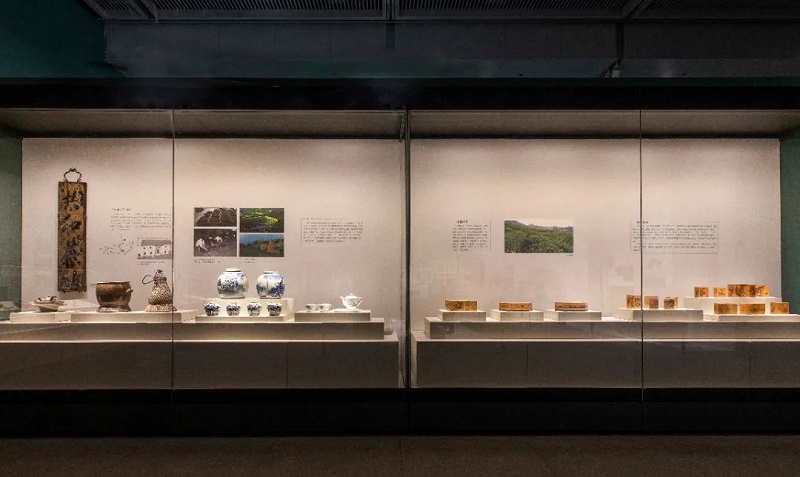
The second part, "Tea spreads of miles", showcases the cultivation, processing, distribution, and transportation of exported tea along the tea road, reproducing the continuous trade route. "The Tea Road" starts from the tea producing areas in southern China, goes north by land and water transportation, passes through Hankou and Zhangjiakou, and passes through Kulun (now the capital of the Mongolian Republic, Ulaanbaatar) to Kyakht, a trade port city on the border between China and Russia in the Qing Dynasty, and is sold to Siberia, Moscow, St. Petersburg and other European countries, with a total length of more than 14,000 kilometers. "The Tea Road" connects the core areas of farming civilization and grassland nomadic civilization in the north-south direction of the Asian continent, and extends to Central Asia and Eastern Europe, witnessing the prosperity of Chinese tea in international trade.
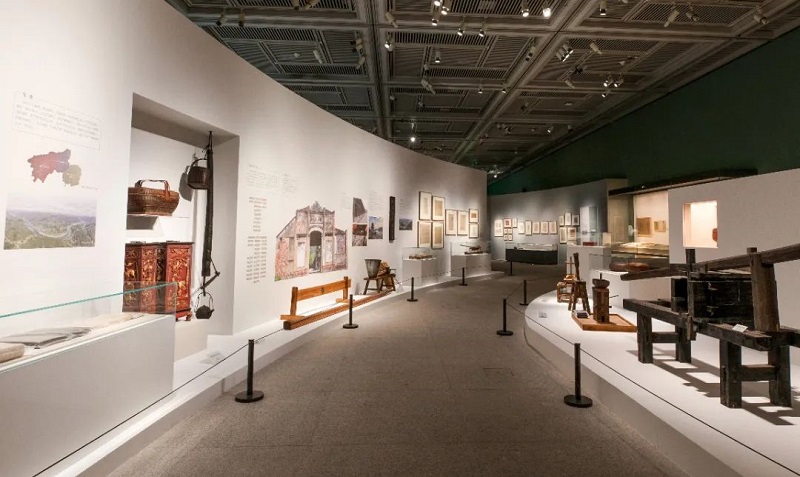

The third part, "Cultural Road" highlights the importance of "the Tea Road" as a channel for cultural exchange and mutual learning between the East and West. Chinese and foreign tea merchants plant, purchase and process tea in Mount Wuyi, Anhua, Wuyuan, Yangloudong and other places, set up shop and guild in Hankou, Shedian, Zhangjiakou and other transit points, and set up shops and warehouses in Guihua, Kulun, Kyakhta and other places. The trade caravan set out with Chinese goods such as tea, cloth, silk, Ceramic, and brought back Russian and Mongolian goods such as furs, medicinal materials, dried fruits, and handicrafts. "The Tea Road" has become a bridge between the farming civilization of the Central Plains and the nomadic civilization of the grassland, and has promoted the material culture exchanges between the two civilized regions.
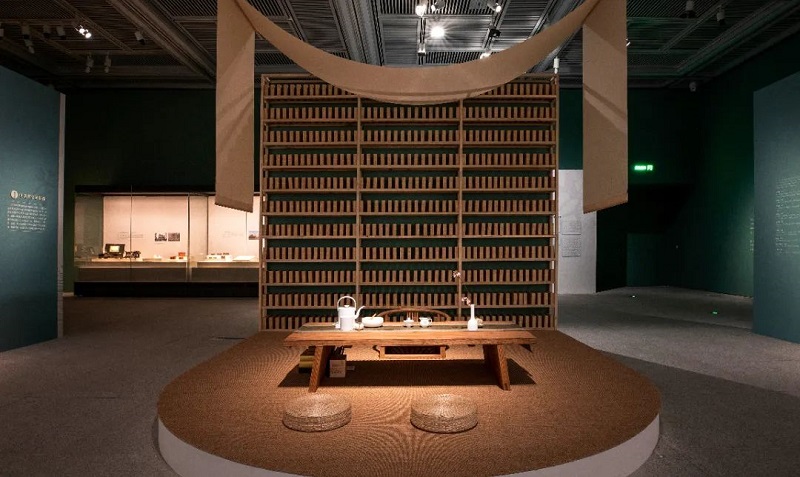
The fourth part, "Joint Inscription", reviews the process of inscription of "the Tea Road" and emphasizes the significance of cross-border application. "The Tea Road" is an important part of the "the Belt and Road". This cultural heritage inherited from the 300 year tea ceremony has witnessed the prosperity of cultural exchanges and trade along the tea road in history, and promoted the exchange of ideas and cultures between China and the West. On the overseas routes, "the Tea Road" basically coincides with the "grassland road" proposed by Mongolia, and is also basically consistent with the "Siberian passage" in Russia, therefore it has natural advantages in cultural exchanges and cooperation between China, Mongolia and Russia. Conducting the investigation, research, protection, and application of cultural heritage resources related to "the Tea Road" is of great practical significance for integrating cultural heritage resources related to the tea ceremony in nine provinces along "the Tea Road", and promoting comprehensive strategic cooperation among China, Mongolia, and Russia.

In order to further experience the unique charm of the exhibition and enhance the interactive experience, a digital interactive experience area has been set up for this exhibition. "The Tea Road" is divided into three major parts: production, distribution and export. Supported by cities, towns and villages along the road, the complete tea trade process is realized by manpower, shipping, camel caravan and railway relay. In order to better meet the audience's concrete association with the tea trade route, the projection interactive experience area in the exhibition hall has designed a multi projection integrated interactive scroll digital display "Distribution and Transportation of Export Tea" to enhance the audience's visiting experience. Viewers can move the virtual brush on the screen by sensing and selecting the transit points they are interested in, further understanding knowledge and information. At the same time, they can also link their phones and scan QR codes to obtain more knowledge.
The exhibition will be open to the public free of charge from March 21, 2023 to May 7, 2023 in the No.2 special exhibition hall on the first floor of the Hunan Museum. Visitors can log in to the official website of Hunan Museum, the official WeChat account, and the Alipay to reserve tickets.



